Organizational visualizations with org charts
Ingentis HR gimmicks
By Kelly O’Hara
We as humans are inherently visual. About 83% of what humans perceive is based on sight1 with the other 17% broken down among the other senses. As a logical consequence, we believe that the visualization of HR data (or any data in general) is an essential tool for identifying the information that is important to you when sifting through the data jungle! So, let’s explore some different ways you can create visual representations – with your org chart!
Hierarchy Structures
One of the most obvious visualizations for org charts is the hierarchy structure. Being able to see an entire organization from top to bottom in a visual way makes it easy for anyone viewing the chart to understand relationships and reporting structures quickly. An org chart can show details like pictures of employees, team structures within groups, and other data, or it can be a simple hierarchy tree that allows for viewers to easily drill down into departments and command structures.
KPIs
Integrating KPIs directly into your org chart gives HR and managers quick access to important information about teams and departments, facilitating the process of HR controlling. For example, if your organization is looking to grow a department’s head count by the end of the year, showing the head count KPI right on the chart makes it easier to see how close you are to reaching your goal at a glance rather than drilling down into the department and manually counting the roles. Or, how about visualizing each department’s budget spent to see at a glance if they are still on track?
Check this page to see some more examples of how the visualization of KPIs looks like with Ingentis org.manager: https://www.ingentis.com/orgmanager/orgchartsoftware/controlling/
Big Data
The visualization of big data can be incredibly beneficial. Rather than working with spreadsheets and documents full of numbers and text, creating a visual representation of your organization’s data can make it easier and faster for consumption of the information at a glance. Employee demographics such as gender or age, location and head count are just a handful of data sets that can be visually represented.
A thought to keep in mind: The larger your organization, the more data you most likely have available. However, just because you have data available doesn’t mean you need to visualize all of it! Focus on making your complex or extensive data visual. If a visualization of the data doesn’t help in time-to-comprehension, it probably isn’t necessary.
Relationships
Relationships on an org chart can be different from a standard hierarchical structure. Visualizing relationships that are cross-departmental, project-based, or otherwise outside of an employee’s regular reporting structure helps HR and managers see all areas of the organization that an employee touches. For instance, you can create separate groups for these relationships (e.g., project or agile teams which we’ll go further into below) or show the relationship through dotted lines. Read more about the visualization of organizational relationships in this Ingentis HR gimmick.
Special Skills
Special skills can often be overlooked as an important part of org charts. Adding skills to your organogram can help HR or managers quickly find employees who fit certain descriptions or have a non-role-related skill without having to send out to company-wide communications asking for the information.
Keep track of who on your staff is certified for first aid, what additional languages anyone speaks, or what degrees people hold. And what about fun information for culture like who enjoys playing soccer? The options for what you record are endless. A great option to visualize this kind of information easily is with the help of icons. Another way of quickly finding employees with special skills is by incorporating the search function. This example called “Who plays soccer” shows how it works in our cloud solution orginio: https://orginio.com/examples/
Agile Teams
Since agile teams are dynamic-based on which roles are needed for projects at a certain time, visualizing how they fit into your organization can be incredibly beneficial. There are a few ways you can visualize your agile team within your overall org chart. For example, try color coding employees who are part of a team, creating completely separate groups for the agile team. Or giving iconographic indicators to these employees so that when you look at the organization as a whole, you can delineate which employees are currently working on an agile project.
We recently wrote a blog post about how you can visualize agile team structures which you can check out to dive even deeper into the topic.
To learn more about ways to visualize your org charts with Ingentis, have a look at our org charting tools:
1.See for example Florack, Scarabis, Primosch (2012, p. 325), or Braem (2004, p.192).